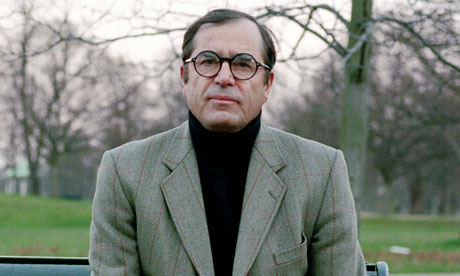Theroux, Paul. Deep South: Four Seasons on Back Roads, with photos by Steve McCurry, Houghton Mifflin Harcourt, Boston/New York, 2015 (441pp.$29.95)
A muggy tedium seeps from nearly every chapter of Paul Theroux’s eighteenth work of non-fiction and tenth travel book. He is, he admits, weary and looking more to the past these days as he passes his seventh decade (he is 74) on the planet. Theroux is, without doubt, the best known travel writer of his time and a man whose willingness to endure fatigue, danger, discomfort and boredom on daring journeys by train, kayak and bus through some improbably “out of the way” parts of sub-Saharan Africa, Oceania, and Central and South America entitle him to an enduring reputation for intrepid curiosity and courage. Always a prickly observer, utterly unafraid to offend his readers, and the moral equal to other literary travelers like Mark Twain and his early mentor V.S. Naipaul, Theroux has earned our indulgence. The list of his travel classics (“The Great Railway Bazaar”, “The Old Patagonian Express”, “The Happy Isles of Oceania” and “Dark Star Safari”) has earned him considerable indulgence; nevertheless, “Deep South” is a tired book, exhibiting Theroux’s considerable powers only infrequently and, perhaps, flawed in conception from the get-go.
Starting from his home on Cape Cod, Theroux would, he tells us, stay “away from the big cities and coastal communities. I kept to the Lowcountry, the Black Belt, the Delta, the backwoods, the flyspecked towns.” He would drive, stay in motels, eat at diners, and endure no danger or discomfort. He would visit and re-visit destinations like Allendale, South Carolina (off the beaten path), Greensboro, Alabama (off the beaten path), and Helena, Arkansas (off the beaten path) and Elberton, Georgia (off the beaten path). He would drive legendary Highway 61 from Memphis south to the home of the Blues. Making advance preparations, he would speak with a series of community and regional economic officials, the working (and non-working) poor, along with a Mississippi writer, a Black Preacher and a smattering of waitresses, factory and field laborers (mostly white), and the elderly who grew up in Segregated Jim Crow country; he would visit several “gun shows” and he would travel in four seasons, returning home to Cape Cod between visits.
The result is a slow unfolding of what Theroux calls the “rotting, picturesque, hopeless, forgotten” South, which he compares in some ways to underdeveloped parts of Africa, though without NGO’s riding to the rescue. Everywhere Theroux encounters Main Streets that are ragged assemblages of empty buildings, “antique” stores and empty movie houses. Churches are everywhere, and Theroux remarks on the religiosity of the people in a land where jobs in lumber milling and textiles have been totally outsourced. He writes (from a gun show), “The whites feel like a despised minority—different, defeated, misunderstood, meddled with, pushed around, cheated.” It is, nevertheless, sometimes a strangely beautiful place, where woods and fields encroach on small back roads and streams cut through forests with mist rising in the early morning off cane brakes. These are the places Assistant Treasury Secretary Cyrus Amir-Mokri (Iranian born) passed through in 2011, noting the ruination of the land and the ragged people, remarking that he could not believe conditions like this existed in the United States.
In a place like Arkansas natural beauty abounds. Yet, it was a “poor, hungry, ill-thought-out, and badly housed state, and the rural areas were notoriously hard-up. In some counties almost thirty percent of the people were living below the poverty line, and one in four of Arkansas’s children were classified as hungry—“food deprived”. This kind of food insecurity, Theroux notes, matches that of Sri Lanka. Why? Theroux speaks with some black farmers in Arkansas’s delta country, learning how Warwick Electronics (owned by Sears), then Sanyo (owned by the Japanese), abandoned Forrest City, taking with them all the decent jobs to Mexico. Helena, also in a beautiful setting on the Mississippi, is all but falling apart.
“Deep South” has clear deficits. Theroux interposes three “interludes” into his travel book, one on the “N-word”, one on Rowan Oak and William Faulkner, and one a considerable essay about regional or “southern” literature. Each has a clunky, part-time feel, as though Theroux felt the necessity to pad a thin book. And, gun shows are pretty much alike, as are the problems and dilemmas of community organizers. More than once Theroux remarks on the takeover of decrepit motels by Gujurati Indians, something that most of us noted long ago. One bright sidelight is an essay on Bill Clinton, ruminations brought on by Theroux’s stopover in Hot Springs (during Clinton’s childhood a hotbed of gangland violence, gambling and vice). Unfortunately, there are no maps to track his wanderings and the set of photographs at the end of the book seem an afterthought.
Theroux’s final thoughts on the South? “Catastrophically passive, as though fatally wounded by the Civil War, the South has been held back from prosperity and has little power to exert influence on the country at large, so it remains immured in its region, especially in its rural areas, walled off from the world.” The unrest seeping into American Politics now seems undoubtedly a reference to this kind of helplessness, fear and institutional and economic inequality.


